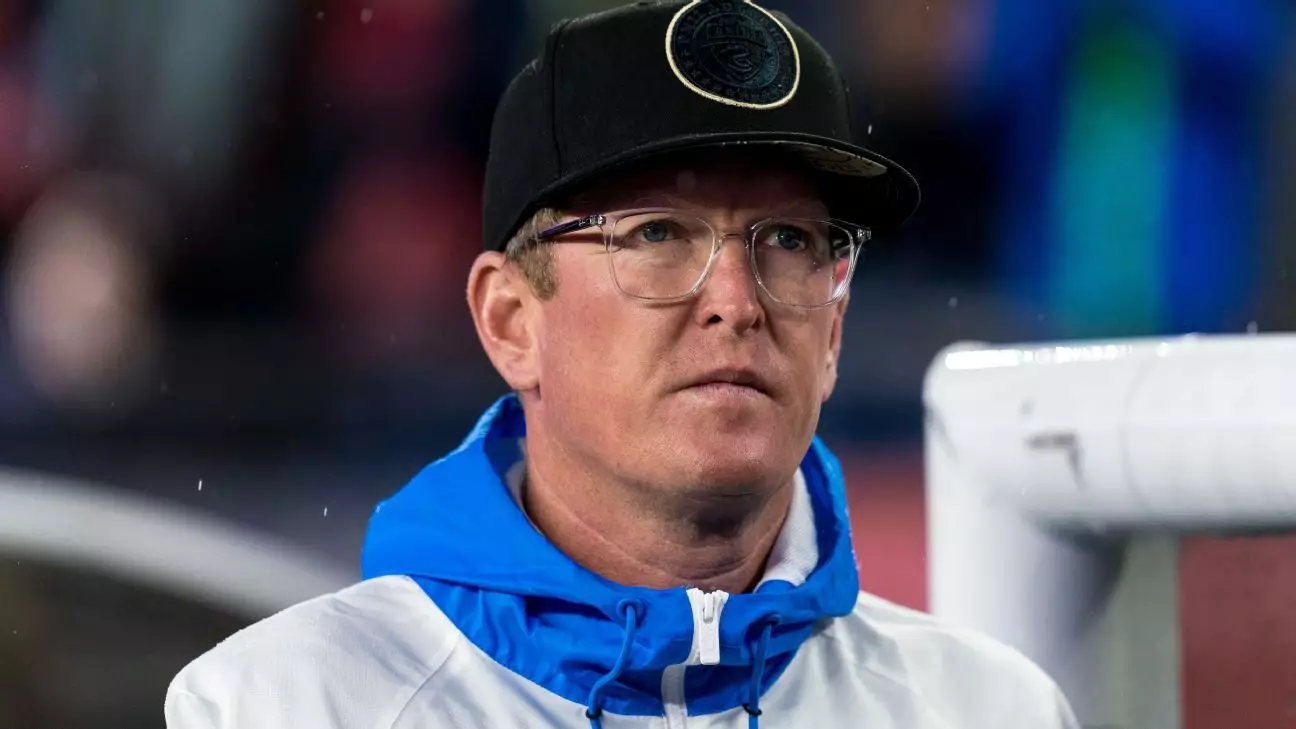Jim Curtin’s unexpected ousting as the head coach of the Philadelphia Union sent shockwaves throughout Major League Soccer (MLS) and the city itself. As a two-time MLS Coach of the Year with deep ties to the club, Curtin’s departure raises critical questions regarding the current operational dynamics within the organization. Fans and insiders alike were left “blindsided,” as sources reported that even those within the club were unprepared for such a sudden shift after a decade-long tenure marked by both triumphs and challenges.
The crux of the matter revolves around the Union’s failure to qualify for the playoffs in 2024, marking the first time the team had missed the postseason since 2017. This dismal outcome, undoubtedly disappointing for a franchise that has prided itself on consistent performance, became the catalyst for Curtin’s departure. Reports depict a tense meeting with sporting director Ernst Tanner, who conveyed the organization’s desire to part ways with Curtin. This instance exemplifies the notion that, in professional sports, the manager is often viewed as the scapegoat when teams underperform.
The terminology used by club owner Jay Sugarman and Tanner, suggesting mutual agreement in the “parting of ways,” starkly contrasts the sentiments expressed by those familiar with the inner workings of the franchise. Many have characterized the decision as a clear firing rather than a consensual departure. This discrepancy is telling of underlying discord within the organization and raises concerns about the management’s decision-making processes.
During Curtin’s tenure, the Philadelphia Union transformed into a model franchise noted for its developmental academy. Talents like Mark McKenzie and the Aaronson brothers—Brenden and Paxten—emerged from its ranks, establishing a reputation for cultivating homegrown talent. The club’s strategic astuteness in acquiring undervalued players like Kai Wagner and Jakob Glesnes further underscored Curtin’s coaching prowess and his ability to capitalize on opportunities that more affluent clubs often overlooked.
Despite these successes, the reliance on homegrown talent is fraught with uncertainties. The Union’s financial standings consistently placed them among the lower echelons of the league in spending, making them susceptible to volatility should their academy fail to deliver or if under-the-radar signings don’t pan out. As the 2024 season deteriorated, the fragility of this model became evident, culminating in Curtin’s dismissal—a move perceived by many as harsh, especially given his legacy of fostering competitive teams on a budget.
While Curtin’s leadership is drawing scrutiny, Tanner’s role appears equally, if not more, contentious. Sources suggest that Tanner’s management style has diminished morale within the organization, contributing to Curtin’s isolation. As key figures, including technical director Chris Albright and assistant coach Pat Noonan, left the club for other opportunities, Curtin found himself increasingly vulnerable. This erosion of support has raised concerns about Tanner’s ability to administer player development and maintain stability within the club’s culture.
Some have criticized Tanner’s recent acquisitions, labeling them as failures and accusing him of losing touch with the demands of MLS team-building. The efficacy of a club’s front office can profoundly impact a coach’s performance, and as Tanner’s signings faltered, the scrutiny shifted towards Curtin. The dilemma of who bears the accountability in professional sports becomes intricate; however, labeling one individual as solely responsible oversimplifies the complexities involved.
The future of the Union seems uncertain in the wake of Curtin’s exit. Although he leaves behind a storied legacy and an intimate connection to the community, the club now faces the daunting challenge of rebuilding its identity. Whoever steps into Curtin’s shoes will need to navigate the tumultuous waters of player management under Tanner’s guidance and restore the confidence of players who have expressed discontent regarding recent leadership changes.
As the Union look towards the future, there is concern that significant momentum has been lost. The unique culture that Curtin fostered, built on trust and familiarity, will not be easily replicated. His unique combination of local ties, a keen understanding of youth development, and time-tested strategies for success is irreplaceable.
Jim Curtin’s dismissal serves as a critical juncture for the Philadelphia Union. It lays bare the intricate web of relationships, expectations, and pressures that define professional sports. The road ahead will require strategic foresight and a recalibration of both managerial and player dynamics to recapture the magic that once made the Union a formidable force in MLS. The onus lies not only on Tanner but also on the club’s newfound leadership to redefine its path forward in an increasingly competitive league.

